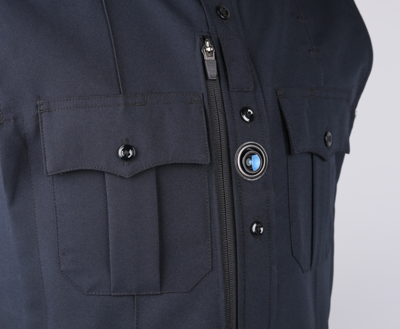ST. LOUIS ŌĆö The ėŻ╠ę╩ėŲĄ Police Department said Wednesday that it hopes to begin outfitting officers with body cameras this summer.
Police Chief John Hayden signed an invoice Tuesday for the purchase of the first round of cameras, Officer Michelle Woodling said.
ŌĆ£The chief could not provide exact dates on when the body cameras will arrive,ŌĆØ Woodling said in an email, ŌĆ£but he hopes they would be delivered before the end of the summer.ŌĆØ
Georgia-based Utility Associates Inc. is the company supplying the cameras. The cityŌĆÖs Board of Estimate and Apportionment earlier approved the five-year, $5.78 million deal.
People are also reading…
The contract will supply enough gear for 800 officers. The patrol divisionŌĆÖs roughly 600 officers will be the first to wear cameras, Woodling said.
Hayden recently created a unit dedicated to maintaining footage from the cameras, Woodling said. The department is still working on certain specifics, such as how long footage will be kept and when officers will be required to record their public interactions, she said. Rules are still being proposed for how the cameras will be used.
The ėŻ╠ę╩ėŲĄ Police Officers Association, the union that represents rank-and-file officers, has asked to have a say in crafting those policies. Jay Schroeder, president of the association, told the Post-Dispatch earlier that union members who are part of a joint management-union committee that was briefed on the plans agreed to a ŌĆ£90-day trial periodŌĆØ after which ŌĆ£weŌĆÖll reevaluate it.ŌĆØ
Jeff Roorda, business manager of the union, said Wednesday that, ŌĆ£The ėŻ╠ę╩ėŲĄ Police Officers Association remains open-minded about body-worn cameras and we look forward to the results of the pilot program. But we expect and deserve answers about the cost of the program, the discrepancies in the bidding process, the capabilities of the equipment and the policies that will be utilized to protect citizensŌĆÖ privacy and police officersŌĆÖ due process rights.ŌĆØ
According to the contract, Utility Associates will supply officers with a and mount, a holster activation sensor and a Bluetooth wrist/belt trigger to control the camera. About 200 police vehicles also will be equipped with dash camera and a camera that records what is happening in the back seat of the patrol car.
The holster sensor activates a recording when an officer removes the gun from its holster. The camera can also capture what happened two minutes before the gun was pulled.
The cameras can be configured to be used in a variety of ways, said Kristen Jaynes of Utility.
The body camera can alert dispatchers if an officerŌĆÖs camera suddenly becomes prone, as if an officer has been wounded, Jaynes said. Also, if the camera is being jostled, as in a chase, for example, the video will automatically begin recording. According to the companyŌĆÖs website, a body camera can off-load wirelessly in real time directly to the cloud, and the department can retrieve it. Commanders can also livestream what the officerŌĆÖs body camera is seeing, Jaynes said.
The ėŻ╠ę╩ėŲĄ mayorŌĆÖs office had said last month that the first batch of cameras could be in use by the end of July.
Body cameras have been a hot-button issue at ėŻ╠ę╩ėŲĄ City Hall for six years. City officials began discussing body cameras in 2014 after the shooting of Michael Brown, a black teenager, by a white Ferguson police officer. Some ėŻ╠ę╩ėŲĄ police sergeants started using cameras on a trial basis in 2015.
The cityŌĆÖs estimate board in 2017 voted to accept a free one-year trial from one body camera vendor and to seek bids for a longer-term deal. But Mayor Lyda KrewsonŌĆÖs administration backed out of the trial and put the issue on the back burner, citing cost concerns.
Last year, amid pressure from Aldermanic President Lewis Reed, the mayor decided to activate a selection committee. In March, that panel chose Utility Associates from three finalists.
Utility is the same company that supplied body cameras to the ėŻ╠ę╩ėŲĄ County Police Department.
Kim Bell covers breaking news for and the ėŻ╠ę╩ėŲĄ. Follow her on Twitter .













